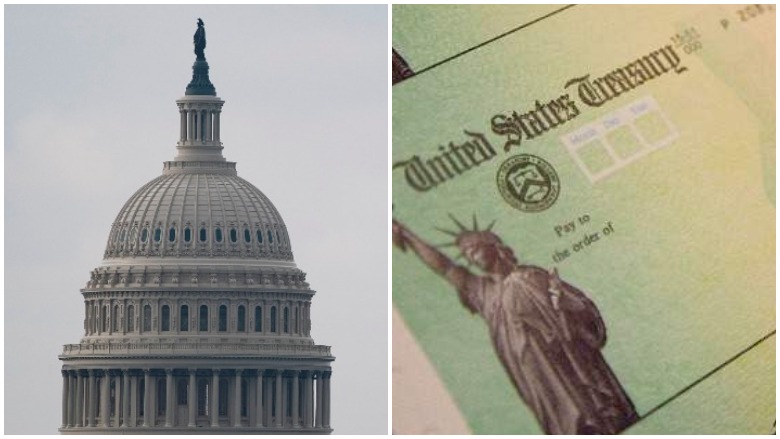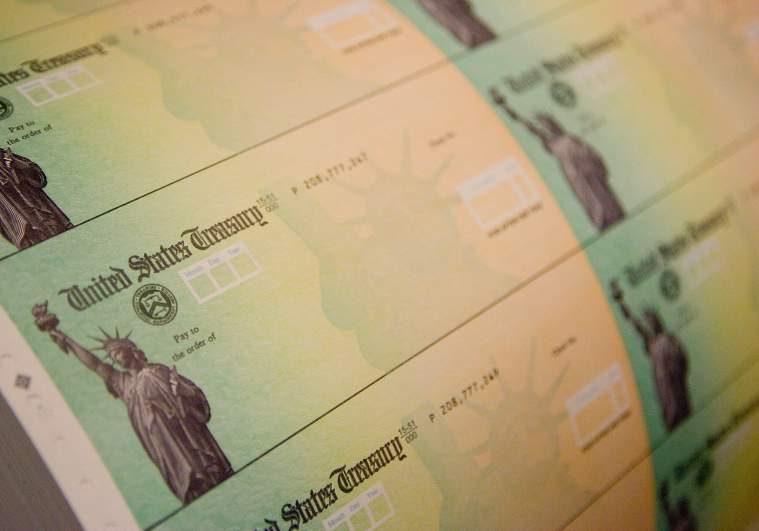
Getty With negotiations yet to yield a new relief package, the imminent government shutdown deadline date may give Congress the push it needs.
A new proposal winding through Congress would give qualifying Americans a third COVID-19 stimulus check worth $1,400.
However, how much money would you get for each dependent?
According to the House Committee on Ways and Means, the proposal to give qualifying Americans a “recovery rebate” would include $1,400 for each dependent.
According to KARE11, the payments are part of President Joe Biden’s $1.9 trillion plan for COVID-19 relief. Biden does not have unilateral authority to get his proposal through; for that he needs Congress, because the Constitution gave funding authority to that body. The plan could come to a vote in the House next week. It’s called the American Rescue Plan. It could be amended in a committee on Monday, however.
Democrats hope the plan passes though Congress by mid-March. Fox59 indicated that Biden might be willing to negotiate on some aspects of his relief plan, like the minimum wage, to get more Republican support for other portions.
Here’s what you need to know:
Although It’s a Tax Credit, the Rebates Would be Paid Out in Advance, Like Stimulus Checks

GettyStudent loan payments are set to resume in February 2021.
According to the Ways and Means document, the plan “provides a $1,400 refundable tax credit for each family member that shall be paid out in advance payments, similar to the Economic Impact Payments in the CARES Act and Consolidated Appropriations Act, 2021.”
How much will people get? According to the Ways and Means committee:
The credit is $1,400 for a single taxpayer ($2,800 for joint filers), in addition to $1,400 per dependent. The credit phases out between $75,000 and $100,000 of adjusted gross income ($112,500 and $150,000 for head of household filers and $150,000 and $200,000 for joint filers) proportional to the taxpayer’s income in excess of the phaseout threshold over $25,000 ($37,500 for head of household filers and $50,000 for joint filers). Thus, under this phaseout structure, the credit is reduced to zero for all taxpayers at the $100,000, $150,000 and $200,000 AGI levels (depending on filing status).
Who Counts as a Dependent?

Getty
For purposes of this credit, “a dependent includes both children and non-child dependents,” the U.S. House document reads.
“A taxpayer is eligible for a credit with respect to any individual in the household for whom a Social Security number is associated with such individual on the tax return. Advance payments are generally not subject to administrative offset for past due federal or state debts, including offset for past-due child support.”
The document adds the following:
Treasury is directed to issue this credit as an advance payment based on the information on 2019 or 2020 tax returns. Furthermore, Treasury is given broad authority to make payments to non-filer populations based on return information available to the Secretary. Treasury shall conduct outreach to non-filers to inform them of how to file for their advance payment. Taxpayers receiving an advance payment that exceeds their maximum eligible credit based on 2021 tax return information will not be required to repay any amount of the payment to the Treasury. If a taxpayer’s 2021 tax credit exceeds the amount of the advance payment, taxpayers can claim the difference on their 2021 tax returns.
READ NEXT: The Death of William O’Neal, FBI Informant.